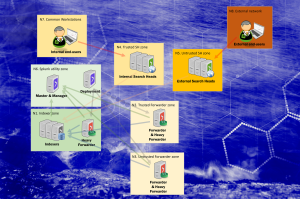What is this?
Recon and red teaming can be done separately, but they also work hand in hand. It may be a good idea for a company to do a thorough recon to understand the adversaries view on the organization – and this not only in the technical sense. This may provide good input and updates to the risk register as well as prepare for an in-depth threat modelling session.
While the recon phase may seem a bit theoretical (and rightly so), the red teaming exercise is where recon results as well as the red team skillset is put to the test. This is where the enterprises defenses are torn down – except for specific (business or technical) limitations (specifically set by the customer) on what the red team can do – there are essentially no limitations.
Tell me more about recon

Recon - tools of the trade
The following are examples on what a recon mission may include:
- Examining a company website for organizational information and personnel
- Using a search engine to further refine the understanding of the organization as well as its assets – including non-public
- Review Job postings for information on technologies and infrastructure
- Searching for leaked credentials for employees
- Looking into the past for things that organizations want to forget – the Wayback machine
- Consulting Shodan for low hanging fruits on existing assets
- Examining whois data
- Delving into certificate transparency logs
- Scavenging storage services
Tell me more about red teaming

Red teaming - tools of the trade
Red teaming tactics and tools include
- Phishing
- Social engineering
- USB-sticking
- Hacking
- Scanning
- Opening (and closing) doors
- Waiting – repeating – and waiting some more
Where, how and when do we start?
We are here to help. We do one-off recons as well as continuous recons providing constantly up to date information on your organization. We can do one off red teaming exercises or set up a yearly contract where we will surprise you a few times during the year.
Let’s get the party started – yesterday. You have already been bleeding information for a long time. Your information is already out there for others to find. Start now, prepare to defend, and then fight back. Fighting back is when the blue team kicks in – but that is a completely different story.

Security Testing
Security testing in brief Applications and systems are commonly assessed for security problems using penetration testing. A beloved child has many names, thus penetration testing

Auditing
Auditing Auditing in short Auditing means many things. For us, it means customized reviews of systems, environments and processes for our customers. In addition to





